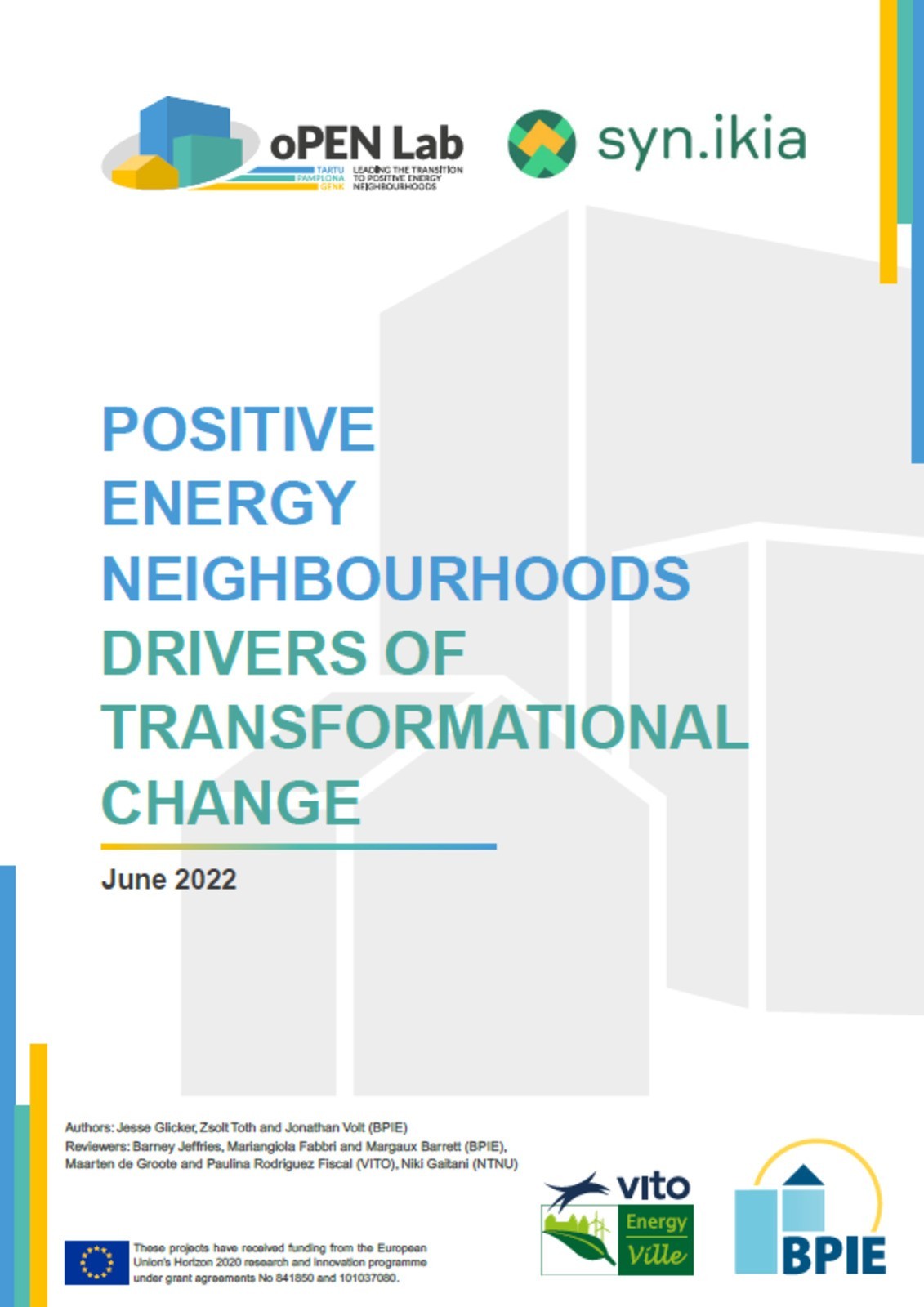Positive Energy Neighbourhoods: Drivers of Transformational Change
Margaux Barrett

In light of EU climate goals and Russia’s invasion of Ukraine, significant measures are needed to decarbonise the economy, reduce energy use and future-proof the building stock. With 75% of Europeans living in urban areas and a rising focus on existing buildings to achieve full decarbonisation by 2050, there is significant opportunity and need to focus on innovative solutions in neighbourhoods and homes, beyond the individual building level. Successful decarbonisation of the EU building stock calls for an integrated, participatory and neighbourhood-based approach.
The concept of a positive energy neighbourhood (PEN) applies a community approach
that can fully reap the benefits of energy efficiency, fuel switching, lifecycle thinking, and the
implementation of renewable and low carbon technologies. A neighbourhood approach enables multiple synergies that can, in a more cost-effective way, help to decarbonise the building stock while incorporating the collective social potential of energy solutions. The aggregation of projects enables industrialised renovation processes, which can be achieved at a lower cost, in a shorter timeframe and at higher quality. Additionally, a neighbourhood approach can empower local communities to take an active role in their energy use, while accelerating the market uptake of novel technologies and business services at scale.
The following policy recommendations are provided and discussed to further facilitate and
scale the implementation of positive energy neighbourhoods to achieve deeper energy gains and decarbonise the EU building stock:
- Endorse Member States to identify appropriate neighbourhoods to implement integrated renovation programmes.
- Establish a harmonised definition of positive energy neighbourhoods (PENs), which should clarify the boundaries of the built environment, covering aspects related to use of renewables, energy communities, mobility, density and social cohesion.
- Reinforce existing policies with PEN solutions, including forthcoming national building renovation strategies.
- Overall, redesign energy efficiency solutions as a dynamic concept. Member States should conduct a national review of electricity market regulations



